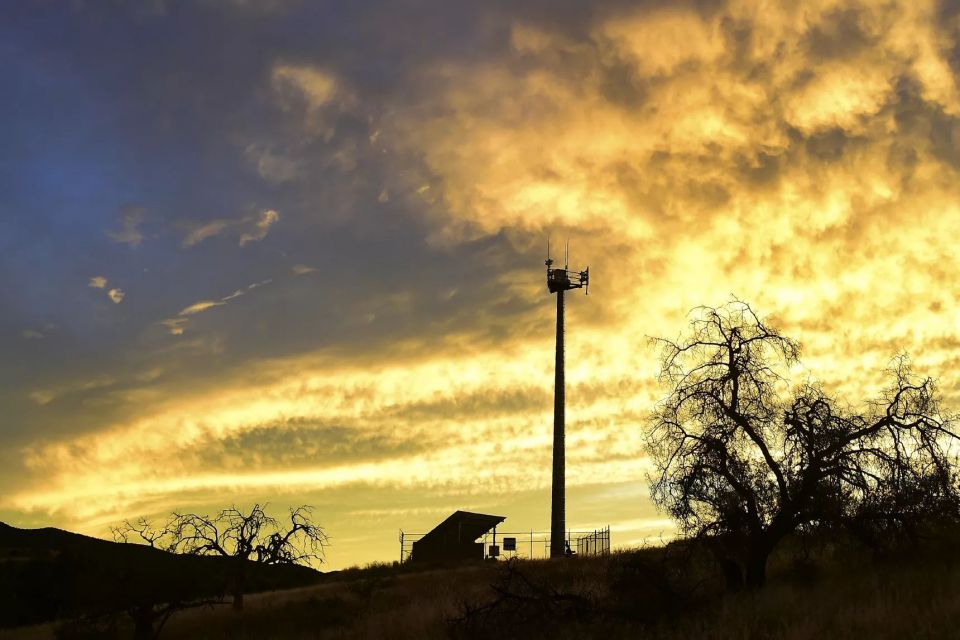

Contributor:
Cite as:
Sánchez-Zuñiga, Ariel. 2019. "Technology use at the Mexico-US border: A '21st Century' Solution?." In "Methodological Interruptions Across the Field and Archive: Doing STS in Mexico" created by Arturo Vallejo. In Innovating STS Digital Exhibit, curated by Aalok Khandekar and Kim Fortun. Society for Social Studies of Science. August.
At the turn of the 21st century, and especially after the 9/11 terrorist attacks, technology use at the Mexico-US border has escalated. Mérida Initiative, a bilateral agreement of cooperation in terms of security, was initially signed by presidents George W. Bush and Felipe Calderón in 2007. A crucial part of this agreement was the construction of a “21st century border” which, through the use of recent technologies and the deployment of more border security personnel, was supposed to improve the “management of the border to enhance security and efficiency.” However, since the start of Donald Trump’s presidential campaign, the issue of border security has gained widespread national and international attention, and an opposition between a highly technified (or “virtual”) border —as the one that Mérida Initiative was planning to build— and a concrete, physical wall has emerged. Our work is located at this juncture and, particularly, it analyzes the discourses of different actors (politicians, scholars, journalists, activists) regarding the use of technology at the Mexico-US border through the lens of STS, philosophy of technology and border theory.
My approach to analyzing the assumptions, implications and consequences of the discourses about the use of technology at the Mexico-US border required my involvement with different types of literature and documents. On the one hand, most of the vocabulary and theoretical basis of my work stems from different fields of academic scholarship: science and technology studies (STS), philosophy of technology, science policy studies, border theory, migration studies and surveillance studies. On the other hand, the primary sources for the discourses I study are usually news and feature articles, official publications and press releases issued by the government and embassies, reports and investigations carried out by government agencies and non-governmental organizations, transcripts from congressional hearings, as well as other types of documents that do not come from academic fields. This plurality and heterogeneity in the sources represents, rather than a difficulty, a great opportunity for engaging with the wide variety of spaces, contexts and actors which, in some way or another, influence the way that the Mexico-US border is built, managed and transformed.
Bier, David J. y Feeney,Matthew. 2018. Drones on the Border. Efficacy and Privacy Implications. In Immigration. Research and Policy Brief, (5): 1-9. Retrieved from https://www.cato.org/publications/immigration-research-policy-brief/drones-border-efficacy-privacy-implications.
Chen, Angela. 2019, February 22. How far has technology come since the last ‘smart border’ failed? In The Verge: Retrieved from https://www.theverge.com/2019/2/22/18236515/smart-border-virutal-fence-surveillance-trump-borders-politics-policy.
Clyburn, James E. 2019, January 29. Border security that is smart, just and merciful. In The Hill: Retrieved from https://thehill.com/blogs/congress-blog/lawmaker-news/427307-border-security-that-is-smart-just-and-merciful?rnd=1548741699.
Cuellar, Henry. 2018, January 11. The answer to border security is technology, not wall (Opinion). In CNN International: Retrieved from https://edition.cnn.com/2018/01/11/opinions/trump-border-wall-ineffective-opinion-cuellar/index.html.
DHS (Department of Homeland Security). 2014. U.S. Customs and Border Protection's Unmanned Aircraft System Program Does Not Achieve Intended Results or Recognize All Costs of Operations: Retrieved from https://www.oig.dhs.gov/assets/Mgmt/2015/OIG_15-17_Dec14.pdf.
DHS. 2018. CBP Has Not Ensured Safeguards for Data Collected Using Unmanned Aircraft Systems: Retrieved from https://www.oig.dhs.gov/sites/default/files/assets/2018-09/OIG-18-79-Sep18.pdf.
Fight for the Future. 2019. 28 Tech and Human Rights Organizations Call on Congress Not to Fund Invasive Surveillance Technology at the US Border: Retrieved from https://medium.com/@fightfortheftr/25-tech-and-human-rights-organizations-call-on-congress-not-to-fund-invasive-surveillance-428b9add26ae
Ghaffary, Shirin. 2019, May 16. The “smarter” wall: how drones, sensors, and AI are patrolling the border: Retrieved from https://www.vox.com/recode/2019/5/16/18511583/smart-border-wall-drones-sensors-ai.
House Democratic Conferees. 2019, January 30. House Democratic Conferees Unveil Proposal for Smart, Effective Border Security: Retrieved from https://appropriations.house.gov/news/press-releases/house-democratic-conferees-unveil-proposal-for-smart-effective-border-security.
Levy, Steven. 2018, June 11. Inside Palmer Luckey’s Bid to Build a Border Wall. In Wired: Retrieved from https://www.wired.com/story/palmer-luckey-anduril-border-wall/.
The White House. Office of the Press Secretary. 2010. Declaration by The Government Of The United States Of America and The Government Of The United Mexican States Concerning Twenty-First Century Border Management: Retrieved from: https://obamawhitehouse.archives.gov/the-press-office/declaration-govern....
Andreas, Peter. 2009. Border Games. Policing the U.S.‑Mexico Divide. 2a. ed. Ithaca and London: Cornell University Press.
Brown, Wendy. 2010. Walled States, Waning Sovereignty. New York: Zone Books.
Cuttitta, Paolo. 2017. Delocalization, Humanitarianism, and Human Rights: The Mediterranean Border between Exclusion and Inclusion. Antipode, 50(3): 1-21.
De León, Jason. 2015. The Land of Open Graves. Living and dying on the Migrant Trail. Oakland: University of California Press.
Ensmenger, Nathan. 2018. The Environmental History of Computing. Technology and Culture, 59(4): S7-S33.
Ereshefsky, Marc. 2014. Species, Historicity, and Path Dependency. Philosophy of Science, 81(5): 714-726.
Fassin, Didier. 2011. Policing Borders, Producing Boundaries. The Governmentality of Immigration in Dark Times. Annual Review of Anthropology, 40: 213-226.
Lisle, D. 2018. Failing worse? Science, security and the birth of a border technology. European Journal of International Relations, 24(4): 887–910.
Nieto-Gomez, Rodrigo. 2014. Walls, Sensors and Drones: Technology and Surveillance on the US–Mexico Border. In Vallet, E. (ed.). Borders, Fences and Walls. State of Insecurity?, 191-210. London and New York: Routledge.
Radder, Hans. 2009. Why Technologies Are Inherently Normative. In A. Meijers (Ed.), Handbook of the Philosophy of Science: Vol. 9 Philosophy of Technology and Engineering Sciences, 887-921. Amsterdam: Elsevier.
Saddiki, Said. 2017. World of Walls: The Structure, Roles and Effectiveness of Separation Barriers. Cambridge, UK: Open Book Publishers. https://doi.org/10.11647/OBP.0121
St. John, Rachel. 2011. Line in the Sand. A History of the Western U.S.‑Mexico Border. Princeton and Oxford: Princeton University Press.
Wall, Tyler & Monahan, Torin. 2011. Surveillance and violence from afar: The politics of drones and liminal security-scapes. Theoretical Criminology, 15(3), 239–254.
Walters, W. 2006. Border/control. Journal of Asian and African Studies, 41(3), 187-203.
Winner, Langdon. 1977. Autonomous Technology: Technics-out-of-Control as a Theme in Political Thought. Cambridge, Massachusetts and London: The MIT Press.
Winner, Langdon. 1980. Do Artifacts have politics? Daedalus, 109(1), 121-136.
All Innovating STS exhibits are oriented by nine shared questions in order to generate comparative insight. These are:
ARTICULATION: What STS innovations (of theory, methodology, pedagogy...Read more
Furthering its theme, Innovations, Interruptions, Regenerations , the 2019 annual 4S meeting in New Orleans will include a special exhibit, Innovating STS , that showcases innovations ...Read more
This photo essay, published in the HuffPost by Carolina Moreno and Gabriela Landazuri Saltos, offers a glimpse into the U.S.-Mexico border’s history. These images show how the concept of "border", that seems to be static and unmovable, is in reallity fluid and idiosyncratic.
Some of the core assumptions in the government’s discourses surrounding border protection can be found when analyzing the way that technology is usually portrayed as the most neutral, effective and efficient way of securing the border. Behind these discourses, there are presuppositions about the...Read more